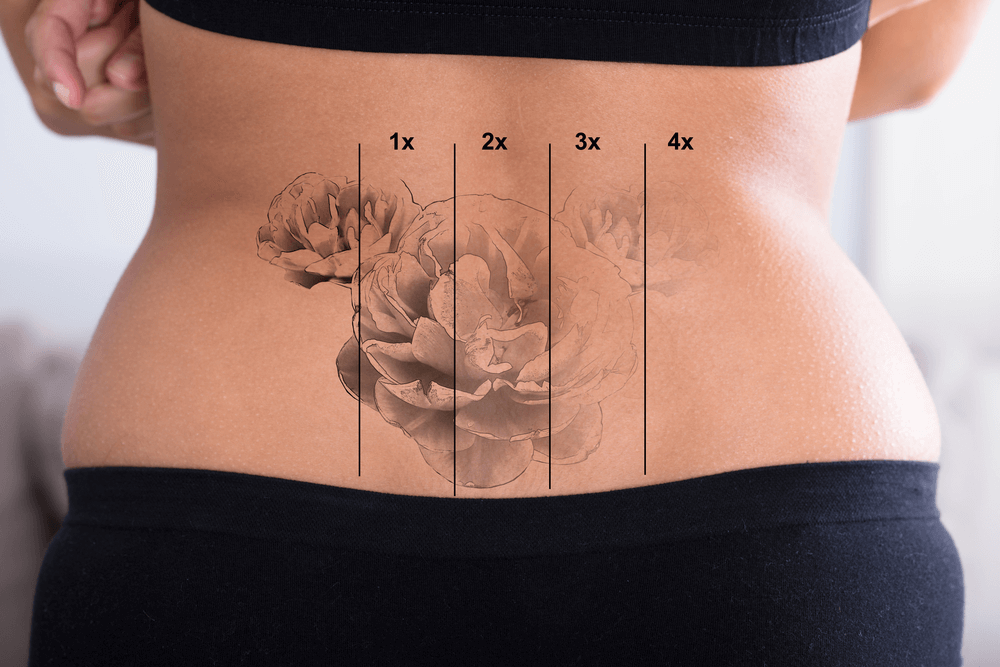Tattoos have been a form of self-expression and cultural significance for centuries. However, as people’s tastes, preferences, and life circumstances change, so do their attitudes toward their tattoos. This has led to an increasing interest in tattoo removal procedures. But what happens when someone wants to replace the old tattoo with a new one? Can you tattoo over a removed tattoo? In this comprehensive exploration, we will delve into the intricacies of tattoo removal in Las Vegas, the different methods available, and the possibilities and challenges of tattooing over a previously removed tattoo.
Understanding Tattoo Removal
Tattoo removal has evolved significantly over the years, moving from crude and often ineffective methods to more advanced and sophisticated techniques. The decision to remove a tattoo can arise from various reasons, such as a change in personal preferences, the desire to erase a painful memory, or a professional necessity. Regardless of the motivation, individuals seeking tattoo removal are often curious about the possibility of getting a new tattoo in the same area.
Methods of Tattoo Removal
- Laser Tattoo Removal: Laser tattoo removal is the most common and widely accepted method. It involves using laser technology to break down the ink particles in the skin. The body’s natural processes then eliminate these fragmented particles over time. The effectiveness of laser removal depends on factors like the color and type of ink used in the tattoo.
- Intense Pulsed Light (IPL) Therapy: Similar to laser removal, IPL therapy uses high-intensity light to target and break down tattoo ink. While less common than laser removal, IPL has been employed in specific cases, and its efficacy may vary depending on the individual and the tattoo.
- Dermabrasion: Dermabrasion is a more abrasive method involving the removal of the top layers of skin. While effective for some tattoos, it can be a painful process, and scarring is a common side effect.
- Excision: Surgical excision involves cutting out the tattooed skin and stitching the remaining skin back together. This method is typically reserved for smaller tattoos and may result in scarring.
- Topical Creams: There are also tattoo removal creams available that claim to fade tattoos gradually. However, the effectiveness of these creams is widely debated, and they are often considered less reliable than other methods.
Considerations in Tattoo Removal
- Skin Type: Different skin types may respond differently to tattoo removal methods. Darker skin tones, for example, may be more prone to pigmentation changes or scarring.
- Tattoo Size and Color: The size and color of the tattoo play a crucial role in determining the success of removal. Larger and multicolored tattoos may require more sessions and could be challenging to completely eliminate.
- Professionalism of the Tattoo Removalist: The expertise of the professional performing the removal is a significant factor. A skilled practitioner will use the appropriate equipment and techniques, reducing the risk of complications.
Tattooing Over a Removed Tattoo
Once a tattoo has been successfully removed, the canvas is theoretically clear for new ink. However, the process of tattooing over a removed tattoo comes with its own set of challenges and considerations.
Skin Condition After Removal
- Scarring: One of the primary concerns after tattoo removal is scarring. Depending on the removal method used, individuals may experience varying degrees of scarring. Scars can affect the texture and appearance of the skin, and tattooing over scar tissue requires careful consideration.
- Pigmentation Changes: Laser tattoo removal, in particular, can sometimes lead to changes in pigmentation. The treated area may be lighter or darker than the surrounding skin. Tattooing over such areas requires skill and precision to ensure the new tattoo blends seamlessly with the natural skin tone.
Choosing a New Design
- Design Considerations: When opting for a new tattoo over a removed one, individuals should carefully consider the design. Intricate designs may help conceal any residual scarring, while simpler designs might accentuate imperfections.
- Consulting with a Tattoo Artist: Professional tattoo artists experienced in covering scars or working on previously tattooed skin can provide valuable insights. Consulting with a skilled artist helps in creating a design that complements the skin’s condition and minimizes the visibility of any imperfections.
Tattooing Techniques and Considerations
- Skill of the Tattoo Artist: The expertise of the tattoo artist is crucial when working on previously tattooed or treated skin. An experienced artist will understand the nuances of tattooing over scar tissue and be able to adapt their techniques accordingly.
- Layering Techniques: Layering techniques can be employed to build up the tattoo gradually. This allows the artist to assess how the skin responds and ensures that the ink is absorbed evenly.
- Covering Up vs. Incorporating: Depending on the visibility of scars or pigmentation changes, individuals may choose to either cover up the area completely or incorporate the existing features into the new design. Skilled tattoo artists can provide options and advice based on the individual’s preferences.
Aftercare and Healing
- Gentle Aftercare: After getting a new tattoo over a removed one, gentle aftercare is crucial. The skin may be more sensitive or prone to complications, so following the artist’s instructions for cleaning and moisturizing is essential.
- Monitoring Healing: Keeping a close eye on the healing process is important. Any signs of infection or unusual reactions should be promptly addressed to ensure the long-term health and appearance of the tattoo.
Conclusion
In conclusion, the possibility of tattooing over a removed tattoo depends on various factors, including the method of removal, the condition of the skin post-removal, and the skill of the tattoo artist. While advancements in tattoo removal have made it more feasible to create new artwork on previously inked skin, it’s essential to approach the process with careful consideration and consultation with experienced professionals. Ultimately, with the right techniques and expertise, individuals can transform their canvas and turn a blank slate into a new, meaningful work of art.

